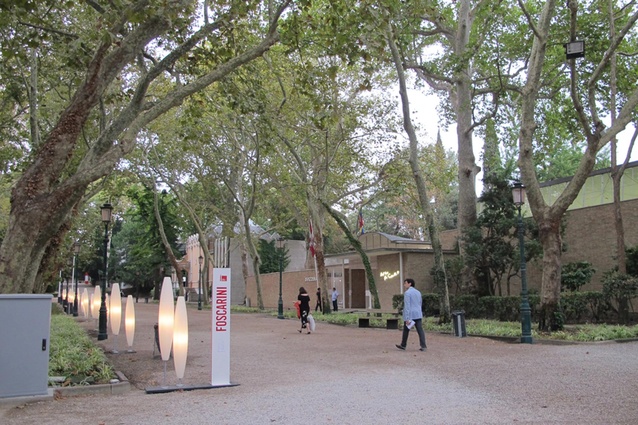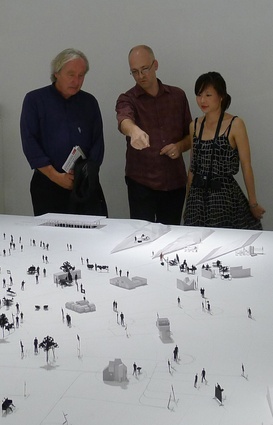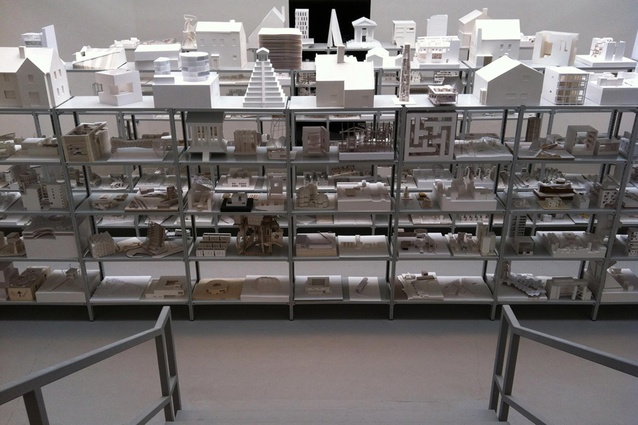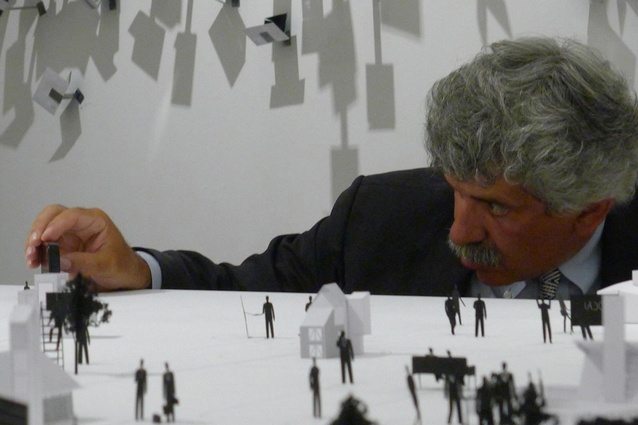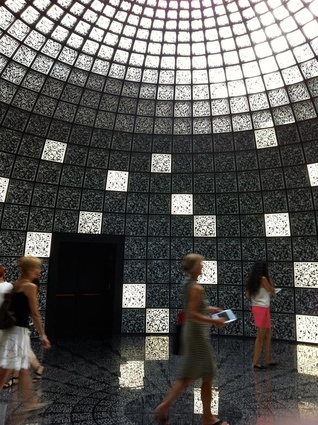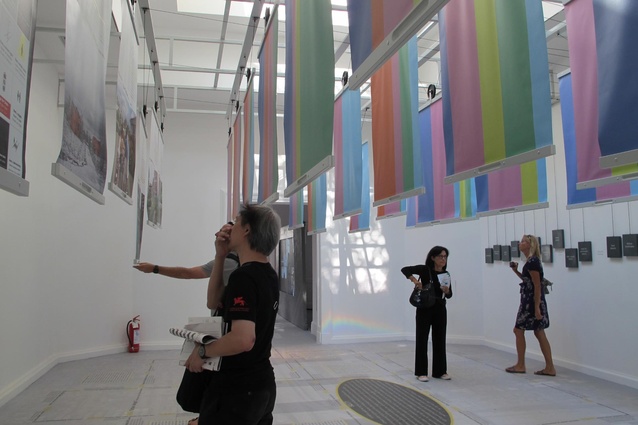Snapshot of Biennale Giardini
The fourth in a series of updates from Dr Andrew Barrie, representing New Zealand at the 2012 Venice Architecture Biennale.
We spent the morning in the Biennale Giardini. This ‘garden’, located out at one end of the Venice’s main island, is a large park occupied by the 30-odd national pavilions, as well as the very large central pavilion which hosts exhibits curated by the Commissioner, David Chipperfield. The Giardini is flooded with people during the previews, but it was refreshingly peaceful this morning, with most of the people around being exhibitors making final adjustments and gearing up to deal with the press. Despite there being only a few people around, we ran into a number of friends, including Portuguese architect Manuel Aires Mateus, who’s recently been in New Zealand teaching at the University of Auckland, Andrew’s old boss Toyo Ito, and Architecture for Humanity founder Cameron Sinclair.
The work on display in the national pavilions varies wildly – the Polish Pavilion was an empty room with subtly tilted walls and floor that reverberates rather alarmingly with sound and vibration, while the Israeli Pavilion had a largely political exhibit looking at the extent of American influence. Highlights included the USA Pavilion, which showed over a hundred “common good” projects ranging from guerilla bike lanes to pop-up markets to urban repair squads. It was an optimistic look at how architects, designers, anyone with ideas and energy could make a difference in the city. The Russian Pavilion was a series of amazing spaces entirely lined with giant, back-lit QR codes. Visitors were issued with iPads with which to scan the various QRs to call up information about various projects in the city of Skolkovo. It was a great spatial experience but a frustrating way to access the content of the exhibition. We also came across a huge exhibit of white models by students from architecture schools around the world, including Unitec in Auckland. It was an impressive collection, but we were disappointed that the models weren’t labeled or their makers’ identified – in environment obsessed with authorship, identity, and the ‘battle of ideas’, this seemed rather condescending towards the students.
It was back to our apartment to freshen up, and then to the Bembo for our opening party. The Palazzo was heaving with people. Just beyond our room is a display in which, aside from some stepping stones, the floor is covered in hollow ostrich egg shells. Every now and then we’d hear a sound like light bulbs exploding as too many people crammed into the space, someone lost their footing, and shells were smashed. Andrew was excited when one of his heroes, American architectural maestro Steven Holl, introduced himself and asked to be shown around our installation, while other folk spotted at the opening included Kazuyo Sejima and Peter Eisenman. But that’s more-or-less it for “business” – now we have a couple of days attending openings and events, and nosing around the rest of the exhibits. We’ll be glad of the chance to listen and think rather than work and talk.

